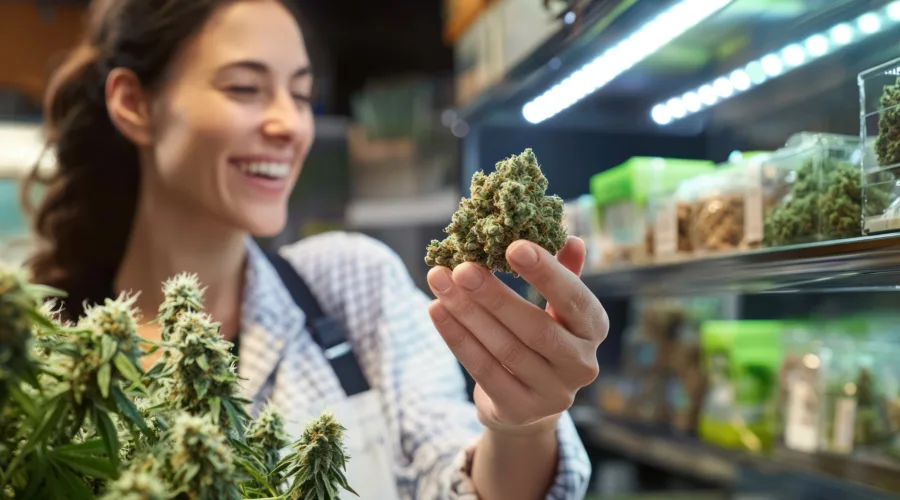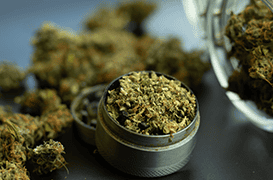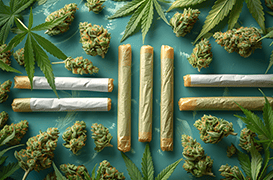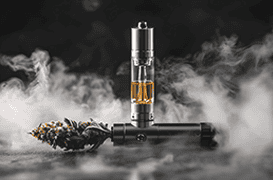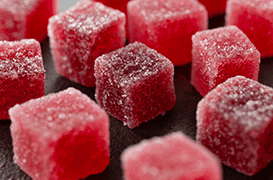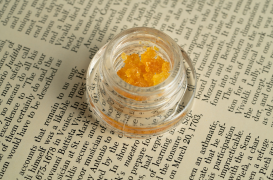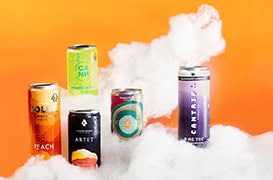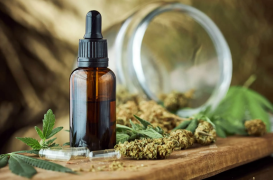The Budtender: Your Cannabis Curator and Educator
In today’s legal markets, the Budtender is much more than a cashier; they are a highly valued cannabis professional, part educator, part advisor, and part retail specialist. They are the human bridge between complex product science and your personal wellness or recreational goals.
The Evolving Role
A great Budtender’s recommendations are often based on a personal understanding of how products affect different people. They should be trained to:
-
Move Beyond Indica/Sativa: They know the old rules are just starting points. They prioritize the full chemical profile—the chemovar—over simple plant genetics.
-
Understand Terpenes: They can explain how the fragrant compounds—like the relaxing Myrcene or the uplifting Limonene—will modulate the effects of the THC and CBD.
-
Focus on the “Why”: Instead of just asking “What do you want?”, they ask, “What experience are you seeking? (Sleep, creativity, pain relief, socializing?)” and “What is your tolerance level?”
The Budtender is an invaluable resource. Always approach them with transparency about your experience and desired outcome to get the most tailored recommendation.
Decoding the Cannabinoids: THC vs. CBD
Before diving into product types, it’s critical to understand the primary chemical drivers of the cannabis experience: THC (Tetrahydrocannabinol) and CBD (Cannabidiol).
THC (Tetrahydrocannabinol): The Psychoactive Powerhouse
THC is the compound responsible for the intoxicating, euphoric “high.”
-
The Effect: Euphoria, altered time perception, deep relaxation, and appetite stimulation (the “munchies”).
-
The Caution: For new users, high THC concentrations can sometimes trigger feelings of anxiety or paranoia. The golden rule is: “Start low, go slow.” High-THC products are often measured as a percentage on flower or in milligrams (mg) for edibles and tinctures.
CBD (Cannabidiol): The Non-Intoxicating Wellness Ally
CBD is non-intoxicating and is primarily sought for its therapeutic and balancing properties.
-
The Effect: Relief from discomfort, reduction of muscle tension, calming effects, and stress management.
-
The Balance: CBD is known to counteract some of the potential anxiety and overstimulation caused by high doses of THC, making products with a balanced THC:CBD ratio (e.g., 1:1, 2:1) a favorite among consumers seeking therapeutic effects with mild euphoria.
Cannabis Product Forms: Finding Your Fit
The choice of product form dictates three crucial variables: potency, onset time, and duration of effects.
1. Flower: The Classic Experience
Flower (or bud) is the dried, cured part of the cannabis plant. It remains the most popular form due to its rich flavor, immediate effects, and ritualistic appeal.
-
Consumption: Typically consumed by smoking (joints, pipes, bongs) or vaping in a dry herb vaporizer.
-
Onset & Duration: Nearly instant onset (2-10 minutes); effects typically last 1 to 3 hours.
-
Why Choose Flower? For consumers who want immediate feedback, enjoy the classic taste and aroma of the plant, and need the most control over their dose (a single puff provides a small dose).
2. Concentrates: Potency Elevated
Concentrates are highly potent products created by extracting the desirable compounds (cannabinoids and terpenes) from the plant material, leaving behind excess plant matter.
-
Examples: Shatter, Wax, Crumble, Live Resin, Rosin, Distillate (often used in vape carts).
-
Consumption: Most often consumed by dabbing (using a specialized rig), or through high-potency vape cartridges.
-
Onset & Duration: Very fast onset (1-5 minutes); effects are intense and can last 1-3 hours.
-
Why Choose Concentrates? They are designed for experienced users with a high tolerance. Concentrates deliver a powerful, immediate dose, making them less ideal for beginners.
3. Edibles: The Slow Burn, Long Ride
Edibles are foods or drinks infused with cannabis extract, such as gummies, chocolates, and beverages.
-
Consumption: Ingestion (eating/drinking).
-
Onset & Duration: Slow onset (30 minutes to 2 hours) due to digestion, but effects are long-lasting (4-8+ hours).
-
The Science: When THC is digested, the liver converts it into the compound 11-hydroxy-THC, which is significantly more psychoactive and potent than the THC inhaled through smoking or vaping. This is why the edible experience is often described as a deeper, more profound “body high.”
-
Why Choose Edibles? They offer discretion and a very long-lasting effect, making them perfect for all-day relief or a full night’s sleep. Critical Reminder: Always Start low (2.5mg – 5mg THC), go slow, and wait at least two hours before considering another dose.
4. Tinctures: The Middle Ground Method
Tinctures are liquid cannabis extracts, typically oil- or alcohol-based, dispensed with a dropper.
-
Consumption: Primarily taken sublingually (drops held under the tongue for 30-60 seconds before swallowing).
-
Onset & Duration: Faster than edibles (15-45 minutes) because the sublingual glands absorb some cannabinoids directly into the bloodstream; effects last 2-6 hours.
-
Why Choose Tinctures? They offer precise dosing and a quicker onset than solid edibles, providing a convenient, smokeless, and discreet method ideal for those who want control.
Consumption Showdown: Vaping vs. Smoking
The choice between inhalation methods is a major point of discussion, often balancing personal preference with wellness concerns.
Smoking (Combustion)
-
Process: Heats the Flower to the point of combustion, creating smoke.
-
Pros: Immediate effects, traditional ritual, full flavor profile of the Flower.
-
Cons: Inhaling smoke (which contains byproducts of combustion) may be harsh on the lungs; noticeable, lingering odor.
Vaping (Vaporization)
-
Process: Heats the Flower or Concentrate (in a cartridge) to a temperature below combustion, creating a vapor.
-
Pros: Immediate effects, smoother inhalation, less odor, and more control over temperature to target specific terpenes.
-
Cons: Device and cart quality vary (watch out for untested additives in some carts); health risks associated with certain cutting agents (though widely removed from regulated markets) remain a concern for some. Studies show that Concentrate vaping can produce harmful aerosol toxicants, emphasizing the need for high-quality, regulated products.
Health Fact: While many consumers view Vaping as a “safer” alternative to Smoking, the most health-conscious consumers often prefer vaporizing whole Flower in high-quality dry herb vaporizers or using Tinctures and Edibles to avoid inhalation altogether.
Beyond the Binary: Why Indica, Sativa, and Hybrid are Obsolete
The classic categorization of strains into Indica (sedating, body high) and Sativa (energizing, head high) is fading in sophistication. Most cannabis sold today is a Hybrid, and modern science shows that the plant’s chemical profile—not its physical structure—determines the effect.
The Modern Framework: Focus on Effects, Not Names
-
Indica/Sativa as a Communication Tool: These terms remain useful shorthand for the Budtender to quickly understand your desired effect (e.g., “I’m looking for an Indica-like feeling for sleep”).
-
The Terpene Story: The true drivers of the experience are the Terpenes, which interact with THC and CBD in what is known as the Entourage Effect.
| Terpene | Aroma | Perceived Effect (The New Classification) |
| Myrcene | Earthy, Musky (Hops, Cloves) | Highly Relaxing, “Couch Lock” potential |
| Limonene | Citrus (Lemon, Orange) | Uplifting, Mood Elevation, Stress Relief |
| Caryophyllene | Spicy, Peppery (Black Pepper) | Calming, Anti-inflammatory. Unique among terpenes as a cannabinoid that can activate CBD receptors. |
| Pinene | Pine, Fir | Alertness, Memory Retention, Counteracting some THC fog. |
The Modern Budtender Recommendation: The professional Budtender will not just recommend an “Indica,” they will recommend a high-Myrcene, THC-dominant Hybrid flower for sleep, or a high-Limonene, balanced THC/CBD Tincture for daytime anxiety relief.
Your Personal Cannabis Journey
The cannabis industry is entering an era of personalization. Whether you prefer the classic ritual of smoking a high-terpene Flower, the discretion and power of a Concentrate vape, the long-lasting effects of a precisely dosed Edible, or the consistency of a sublingual Tincture, the right product is out there.
Use your Budtender as your guide, focus on the effects you desire, prioritize products with clear cannabinoid and terpene information, and always adhere to the simple, critical mantra: Start Low, Go Slow.

